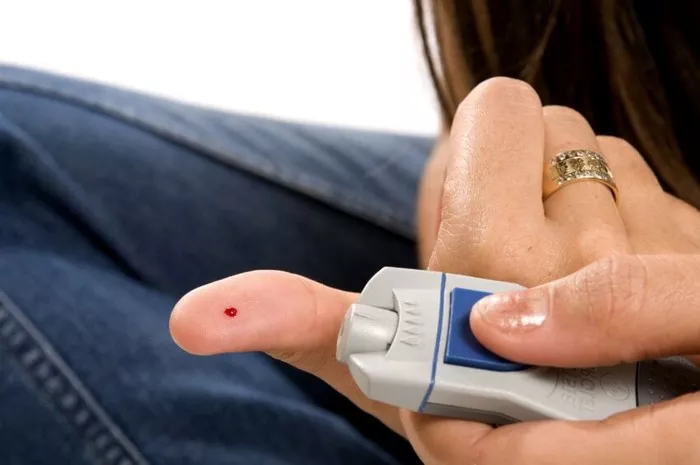Hemoglobin A1C (HbA1c) is a crucial marker in the management of diabetes, reflecting the average blood glucose levels over the past two to three months. For individuals with diabetes, monitoring HbA1c levels is essential in maintaining glycemic control and preventing complications. In this article, we will delve into what constitutes a normal A1c level, its significance, and the factors influencing it. This comprehensive discussion will encompass the biological basis of HbA1c, interpretation of A1c results, and strategies to achieve and maintain target A1c levels.
The Biological Basis of Hemoglobin A1C
Hemoglobin is a protein in red blood cells responsible for carrying oxygen throughout the body. When glucose circulates in the blood, it can attach to hemoglobin, forming glycated hemoglobin (HbA1c). The amount of HbA1c formed is directly proportional to the average blood glucose levels over the lifespan of the red blood cell, typically around 120 days.
The Formation and Measurement of A1C
HbA1c is formed through a non-enzymatic glycation process, where glucose molecules bind to the N-terminal valine of the beta chain of hemoglobin. The measurement of HbA1c involves quantifying this glycated fraction of hemoglobin. Laboratory methods for measuring HbA1c include high-performance liquid chromatography (HPLC), immunoassay, and enzymatic assays, each with its specific accuracy and standardization processes.
What is a Normal A1C Level?
For non-diabetic individuals, a normal A1c level ranges between 4% and 5.6%. This range reflects an average blood glucose level of approximately 70 to 100 mg/dL. An A1c level within this range indicates good glycemic control and a lower risk of diabetes-related complications.
A1C Levels and Diagnosis of Diabetes
According to the American Diabetes Association (ADA), an A1c level of 6.5% or higher on two separate tests indicates diabetes. Levels between 5.7% and 6.4% suggest prediabetes, a condition characterized by higher-than-normal blood glucose levels but not high enough to be classified as diabetes. This intermediate state is associated with an increased risk of developing type 2 diabetes and cardiovascular disease.
The Significance of A1C in Diabetes Management
For individuals with diabetes, maintaining an appropriate A1c level is crucial for reducing the risk of complications such as cardiovascular disease, neuropathy, retinopathy, and nephropathy. The ADA recommends a target A1c level of less than 7% for most non-pregnant adults with diabetes. However, individualized targets may be set based on a person’s specific circumstances, including age, duration of diabetes, comorbid conditions, and risk of hypoglycemia.
Tailoring A1C Targets
- Young Adults and Newly Diagnosed Patients: For younger individuals and those newly diagnosed with diabetes, a more stringent A1c target of less than 6.5% may be appropriate to minimize the risk of long-term complications.
- Elderly Patients and Those with Comorbidities: For older adults, especially those with a long duration of diabetes or multiple comorbidities, a less stringent target (e.g., 7.5%-8%) may be safer to avoid hypoglycemia and maintain quality of life.
- Pregnancy: Pregnant women with diabetes should aim for tighter glycemic control, with an A1c target of 6-6.5% to reduce the risk of congenital anomalies and other pregnancy complications.
Factors Influencing A1C Levels
Several factors can influence HbA1c levels, including physiological variations, lifestyle choices, and certain medical conditions.
Physiological and Genetic Factors
- Red Blood Cell Lifespan: Conditions affecting red blood cell turnover, such as hemolytic anemia or recent blood transfusions, can alter HbA1c levels.
- Genetic Variations: Certain hemoglobin variants can interfere with the accuracy of HbA1c measurements. For instance, hemoglobin S in sickle cell disease or hemoglobin E can affect the interpretation of results.
Lifestyle and Behavioral Factors
- Diet and Exercise: A diet high in refined sugars and carbohydrates can increase blood glucose levels and, consequently, HbA1c. Regular physical activity helps improve insulin sensitivity and lower blood glucose levels.
- Medication Adherence: Consistent use of prescribed diabetes medications, including insulin and oral hypoglycemics, is critical in maintaining target A1c levels.
- Stress and Sleep: Chronic stress and poor sleep quality can negatively impact blood glucose control. Stress management techniques and adequate sleep are essential components of diabetes care.
Medical Conditions and Medications
- Chronic Kidney Disease: Kidney disease can affect insulin clearance and glucose metabolism, potentially leading to higher HbA1c levels.
- Corticosteroids: Medications such as corticosteroids can elevate blood glucose levels, necessitating adjustments in diabetes management plans.
Strategies to Achieve and Maintain Target A1C Levels
Achieving and maintaining target A1c levels requires a multifaceted approach, including lifestyle modifications, pharmacotherapy, and regular monitoring.
Lifestyle Modifications
- Balanced Diet: A diet rich in whole grains, lean proteins, healthy fats, and a variety of fruits and vegetables helps stabilize blood glucose levels. Carbohydrate counting and meal planning can further assist in managing postprandial glucose spikes.
- Regular Exercise: Engaging in at least 150 minutes of moderate-intensity aerobic activity per week, along with resistance training, can improve insulin sensitivity and lower HbA1c levels.
- Weight Management: For overweight or obese individuals, weight loss can significantly improve glycemic control. Even a modest weight reduction of 5-10% can lead to meaningful reductions in HbA1c.
Pharmacotherapy
- Insulin Therapy: For individuals with type 1 diabetes and those with type 2 diabetes who do not achieve target A1c levels with oral medications alone, insulin therapy is essential. Modern insulin analogs and delivery systems (e.g., insulin pumps) have improved the ease and accuracy of insulin administration.
- Oral Hypoglycemics: Medications such as metformin, sulfonylureas, and DPP-4 inhibitors help manage blood glucose levels. SGLT2 inhibitors and GLP-1 receptor agonists not only improve glycemic control but also offer cardiovascular and renal benefits.
- Continuous Glucose Monitoring (CGM): CGM systems provide real-time glucose readings, helping individuals and healthcare providers make informed decisions about treatment adjustments.
Regular Monitoring and Follow-up
- Frequent A1C Testing: Regular A1c testing, typically every three months for those not meeting their glycemic goals and every six months for those with stable control, is recommended to monitor progress and make necessary adjustments.
- Self-Monitoring of Blood Glucose (SMBG): Regular SMBG helps track daily blood glucose patterns and identify factors affecting glucose levels, facilitating timely interventions.
- Collaborative Care: Working with a multidisciplinary healthcare team, including endocrinologists, dietitians, diabetes educators, and primary care providers, ensures comprehensive management and support.
The Role of Technology in Diabetes Management
Advancements in technology have revolutionized diabetes care, offering new tools for monitoring and managing blood glucose levels.
Insulin Pumps and Artificial Pancreas Systems
Insulin pumps provide continuous subcutaneous insulin infusion, mimicking the body’s natural insulin release. Artificial pancreas systems combine insulin pumps with CGM, automatically adjusting insulin delivery based on real-time glucose readings, significantly improving glycemic control and reducing the burden of diabetes management.
Mobile Health Apps and Telemedicine
Mobile health applications and telemedicine platforms facilitate remote monitoring and consultations, making diabetes care more accessible and personalized. These tools can provide real-time feedback, educational resources, and support for lifestyle modifications and medication adherence.
Addressing Disparities in Diabetes Care
Despite advancements in diabetes management, disparities in care persist, particularly among minority populations and those with low socioeconomic status. Addressing these disparities requires targeted interventions, including:
- Education and Outreach: Culturally tailored education programs and community outreach initiatives can improve diabetes awareness and self-management skills.
- Access to Care: Expanding access to affordable healthcare services, medications, and monitoring tools is crucial in reducing disparities and improving outcomes.
- Policy Advocacy: Advocating for policies that support diabetes prevention, management, and research funding is essential for addressing the broader social determinants of health.
Conclusion
Understanding what constitutes a normal A1c level and the factors influencing it is fundamental in the management of diabetes. By adopting a comprehensive approach that includes lifestyle modifications, pharmacotherapy, regular monitoring, and the utilization of advanced technologies, individuals with diabetes can achieve and maintain target A1c levels, thereby reducing the risk of complications and improving overall health outcomes. As healthcare providers, it is our responsibility to support and empower our patients in their journey towards optimal diabetes management, ensuring that care is equitable, personalized, and effective.
Related topics:



























